Voice Interaction
Voice Assistant
Mercedes-Benz R&D North America
Unfortunately, I can't share any detailed design solutions of this project just yet. However, I'll try my best to outline the general thinking and process.
Scope
Collaboration
UX Designers, UX Researchers, Software Engineers
UX Concept Lead
After delivering a voice interaction UI concept for car models released in 2018 we were asked to develop the base concept for the new generation of voice interaction for cars released in 2020.
Challenge
Current in-car voice concepts rely on a set of unnatural commands supported by a teleprompter style overlay that is and feels entirely disconnected from the main in-car operating system.
Discovery
In the discovery phase we were trying to learn as much as possible about our users, how they interact with previous voice system generations and other voice-operated consumer devices.
Ideation
Based on our prioritized focus areas and how might we's we came up with a lot of different use cases and user scenarios. We rated the use cases and ideas by user value and implementation effort. Sketches of possible concept solutions per focus area were created next.
Decision point. Doing parallel sketches for our prioritized use cases and reviewing them in project team sessions we were able to decide on some core UX principles of what kind of experience we wanted to achieve. Our experience with creating the voice assistant for MBUX and the related UX research played a big part in that: This time, we didn't want to build a voice system on top of another system, but rather have only one holistic system that can be controlled with multiple modalities in the same way.
UX Principles
These are the main guiding principles for how voice interaction should be integrated in the car. More detailed principles were created focusing on very specific voice related issues, such as error recovery, how, when and where content is displayed and more.
holistic
for a holistic UX voice needs to be seamlessly integrated in the main system, be flexible and use the most appropriate modality and format to communicate with the user
natural
the users doesn't have to learn a new vocabulary of commands in order to interact with the car – it feels as natural as having a conversation with another person
intelligent
proactively assist the user and minimize driver distraction by focusing on relevant results that take the users’ context and preferences into account
personality
to express the car's personality dialogs are human like, friendly, helpful and lightweight and supported by sound and light ; the system is empathic, responsive and capable of learning
Interaction Flows
Since I can't show most details of our design solutions yet I restricted this section to only few interaction examples.

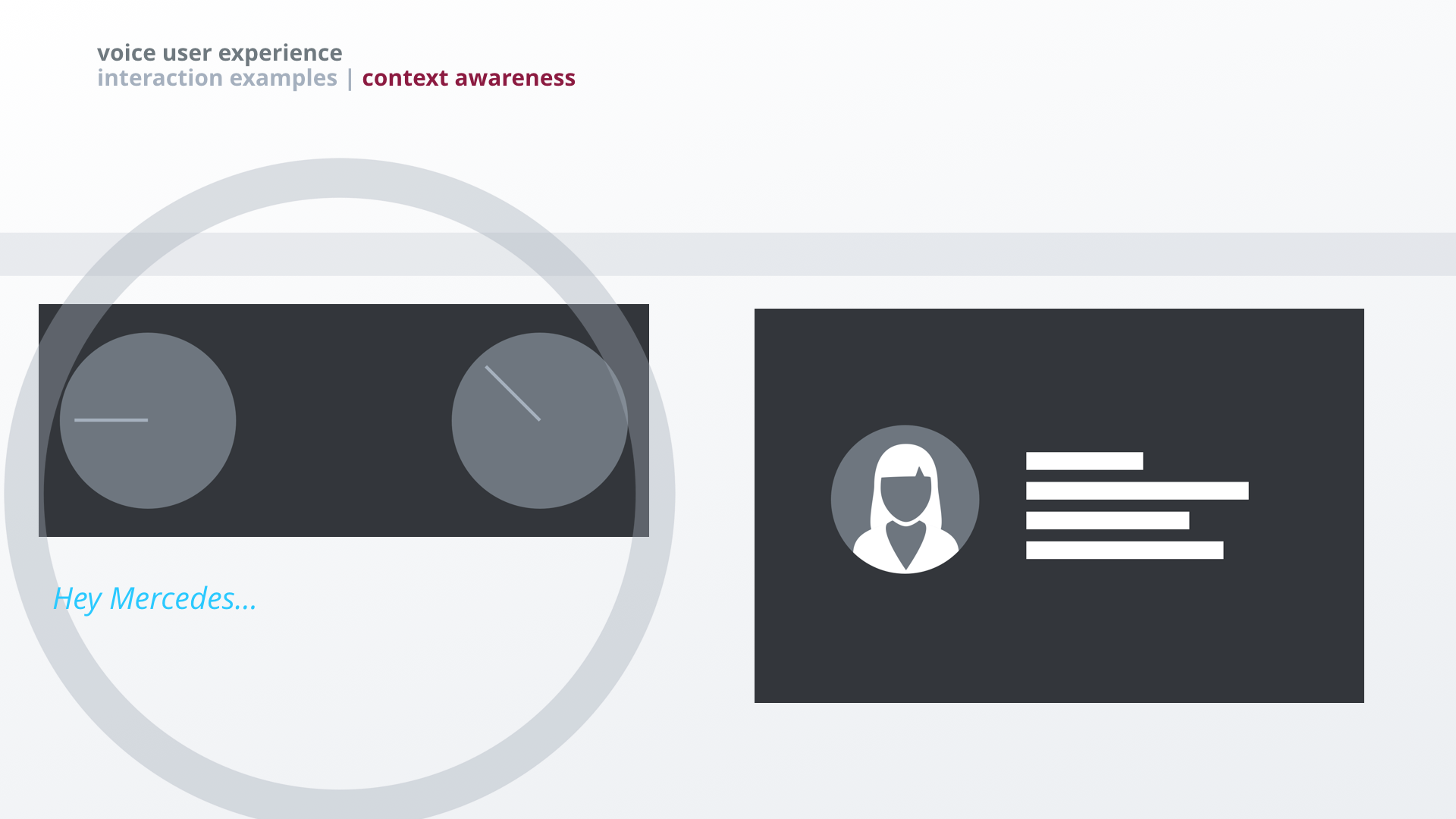

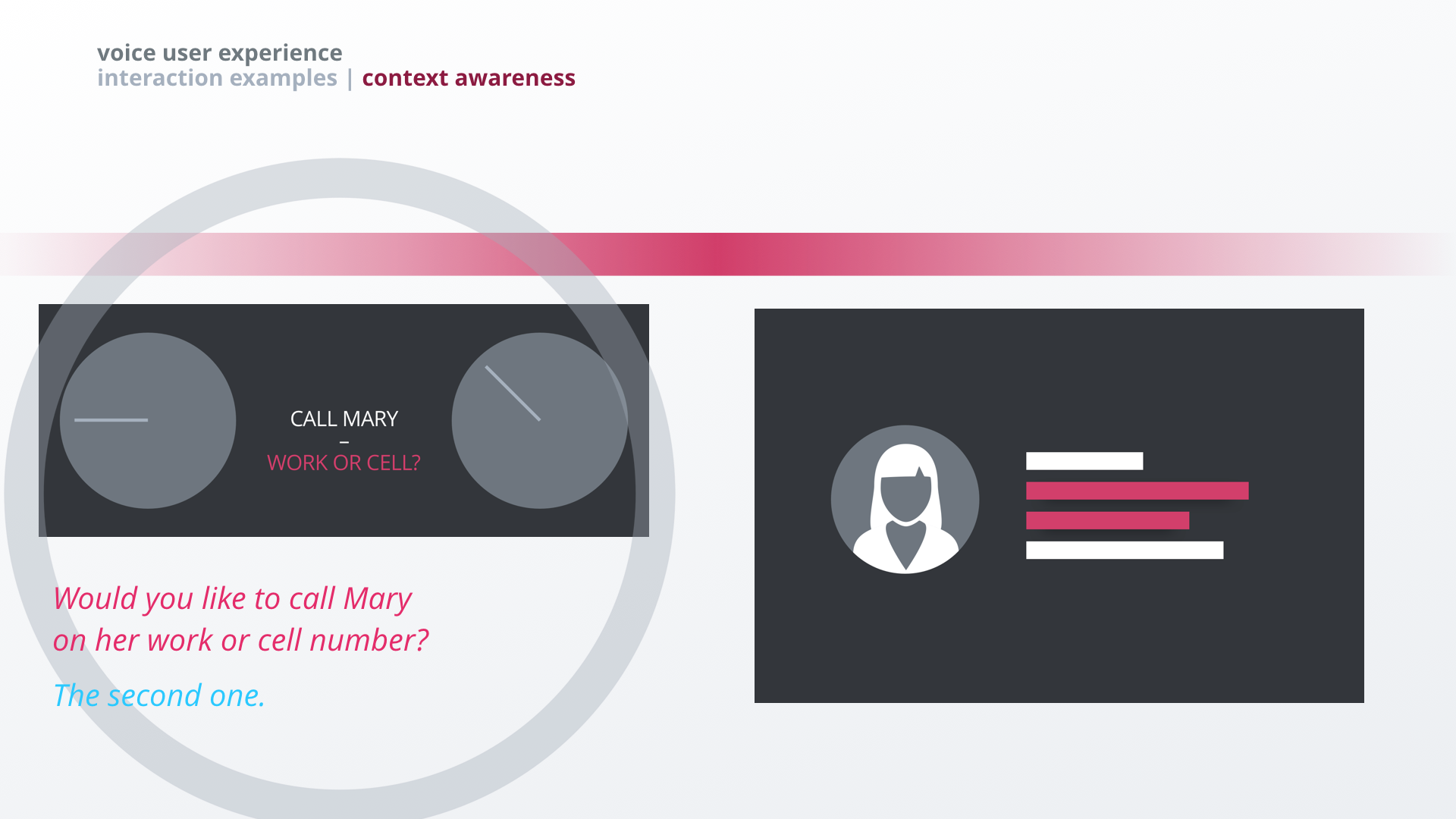
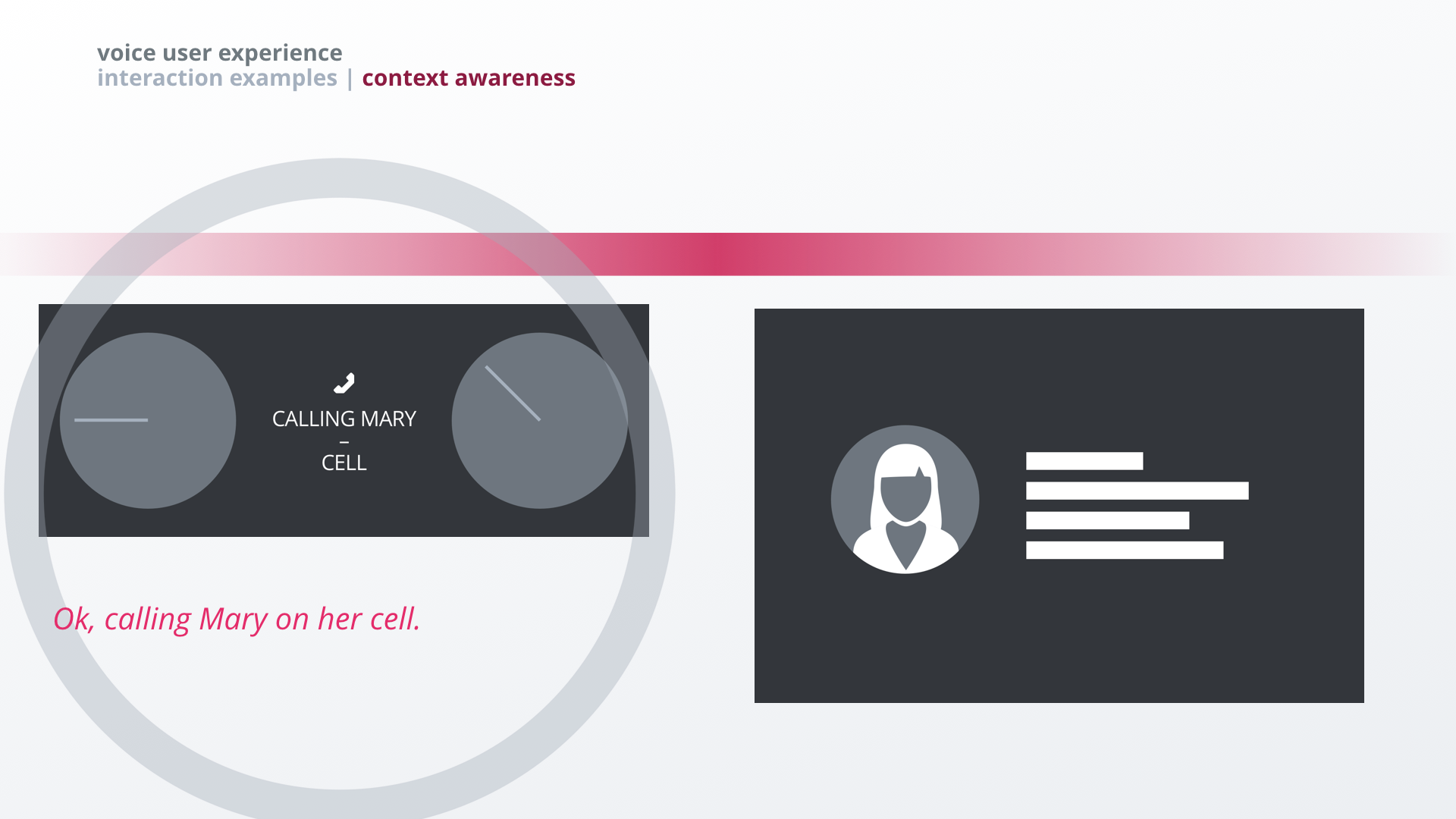

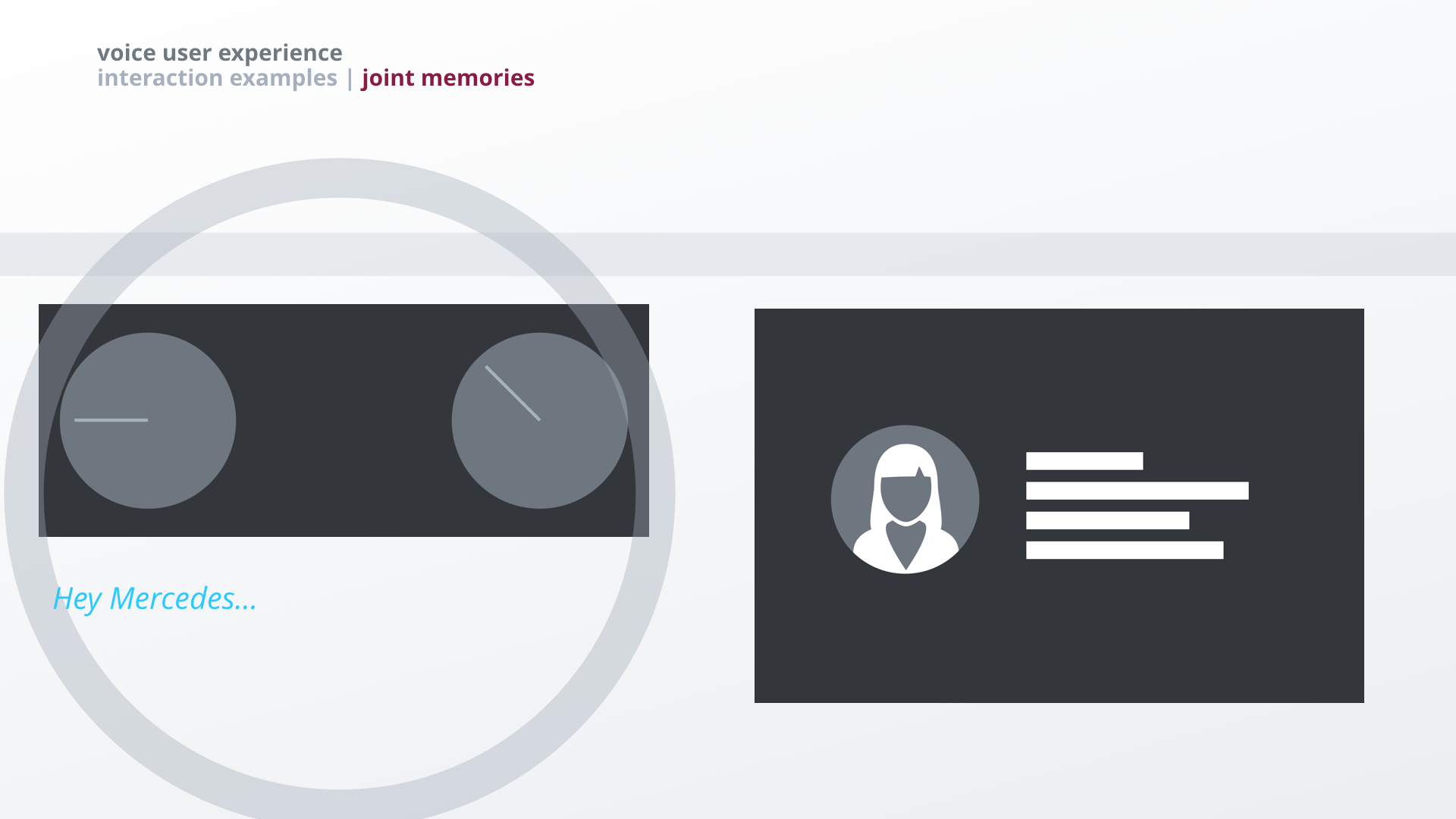
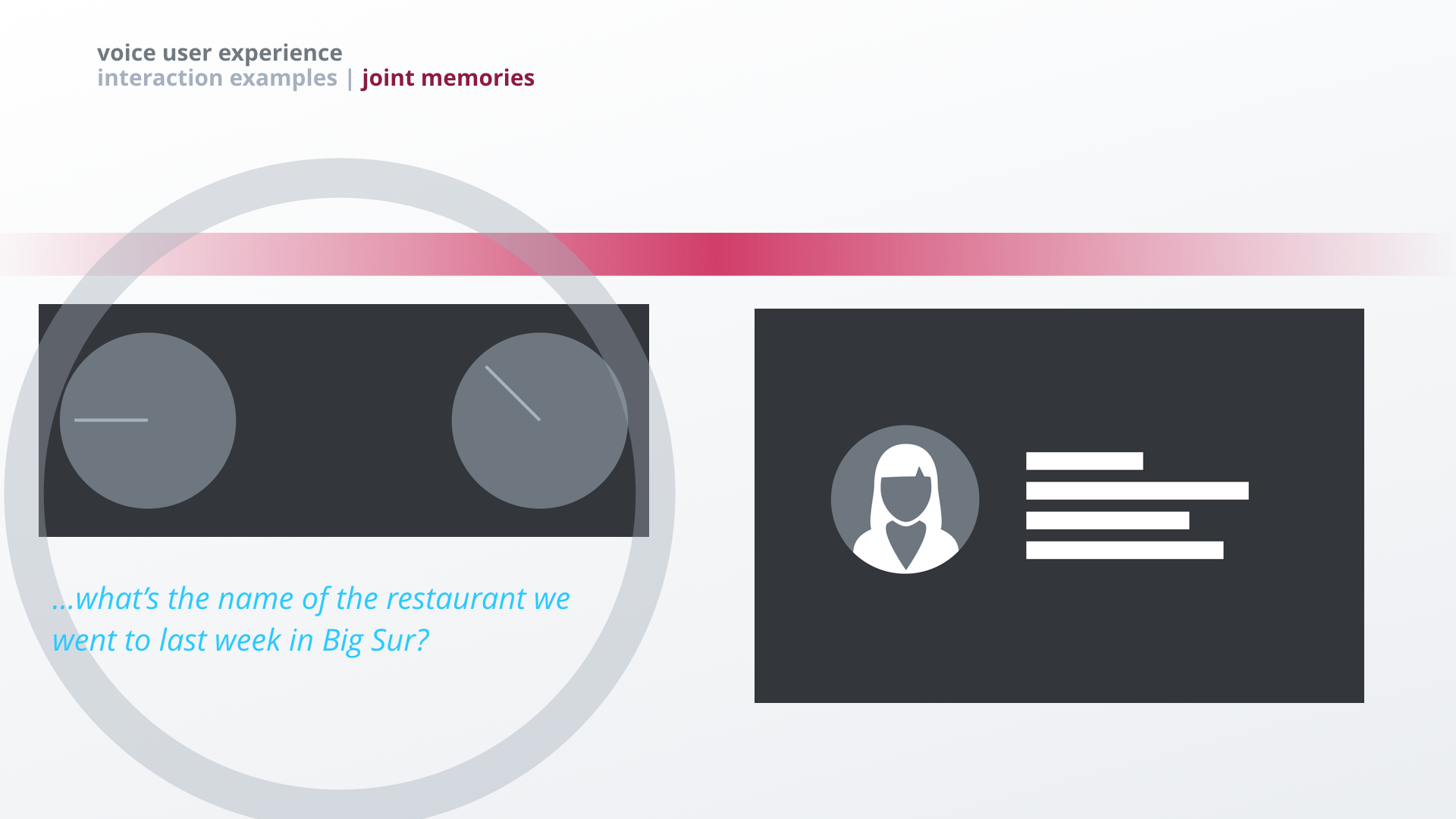
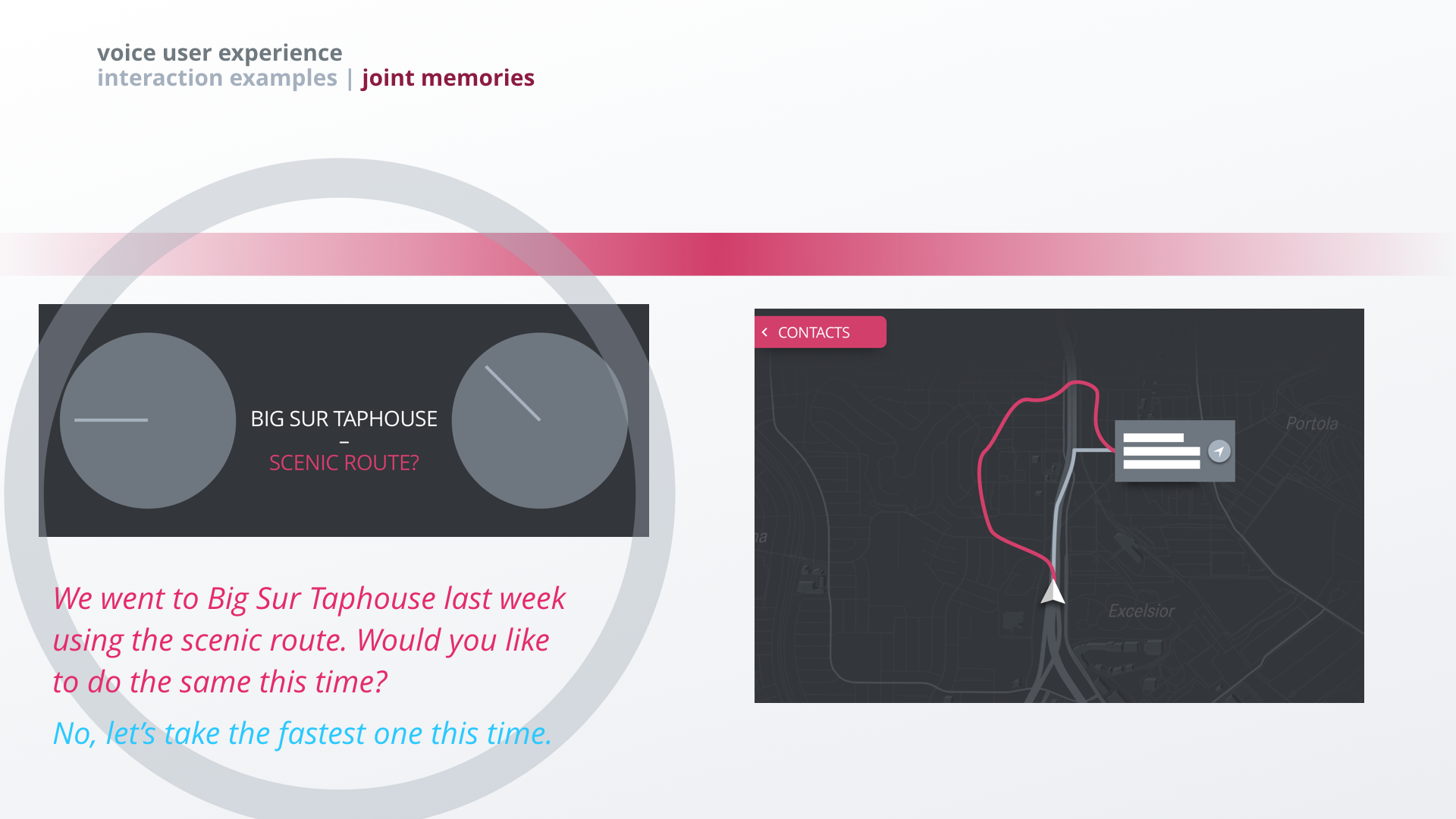
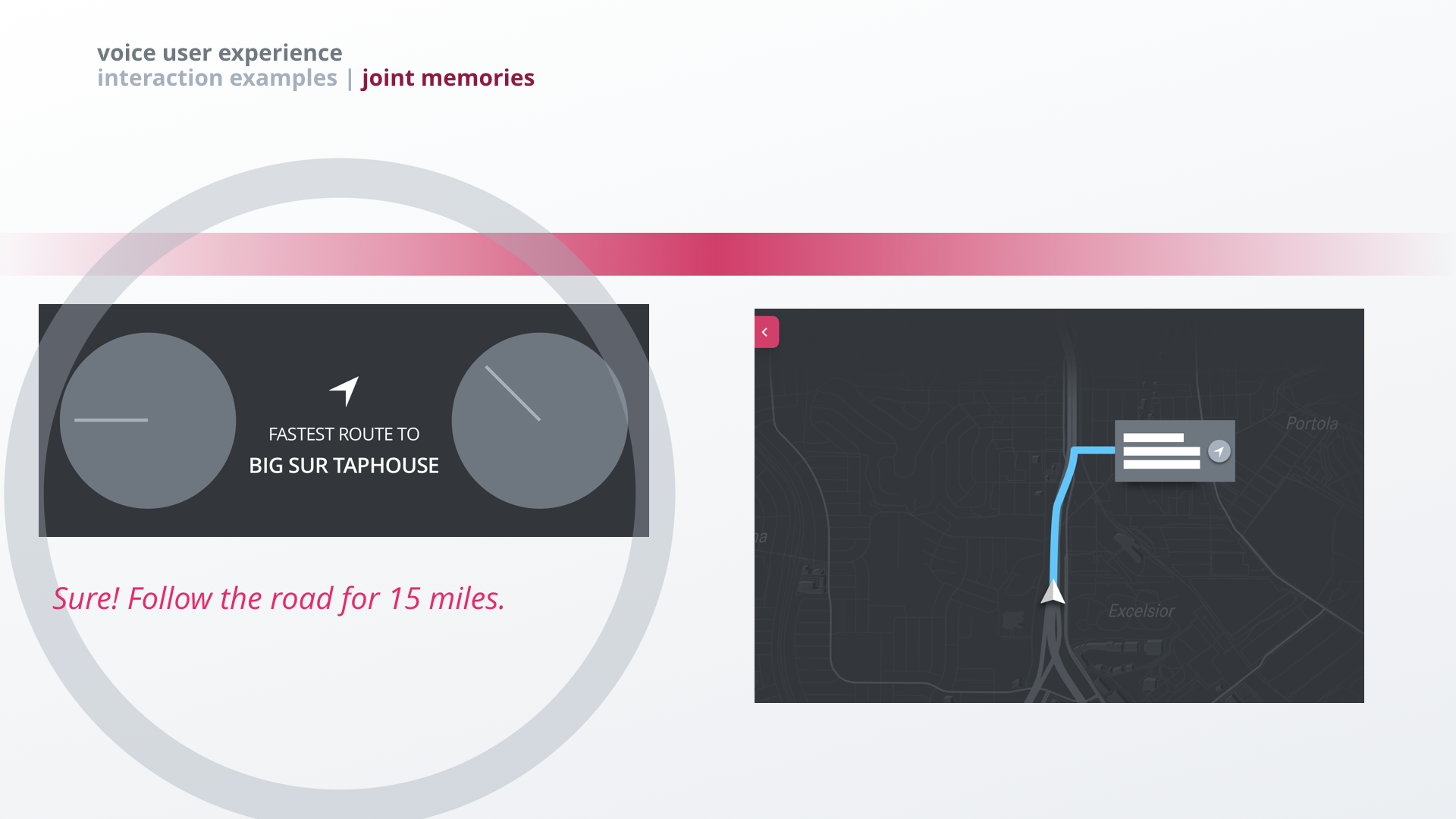
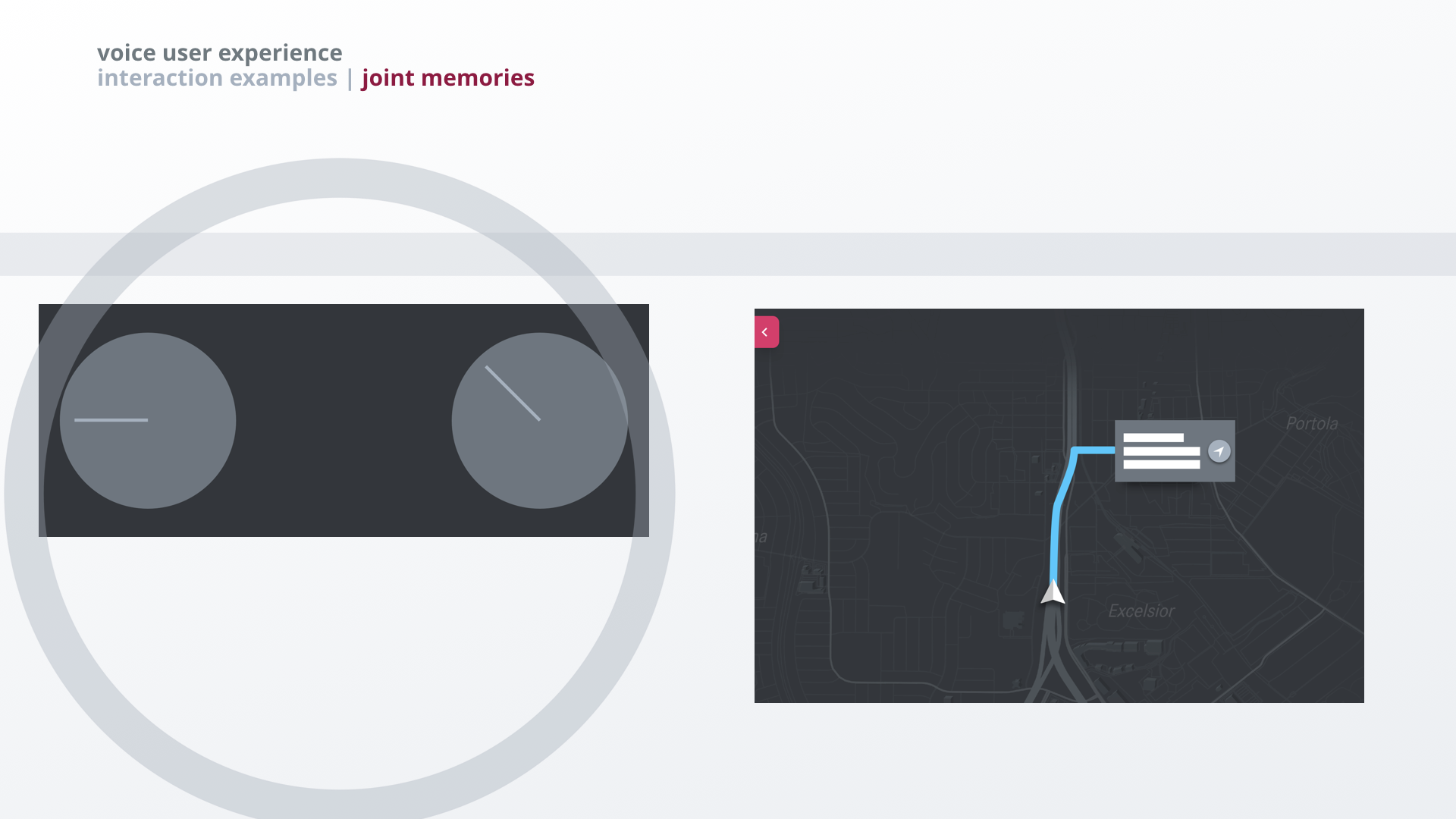

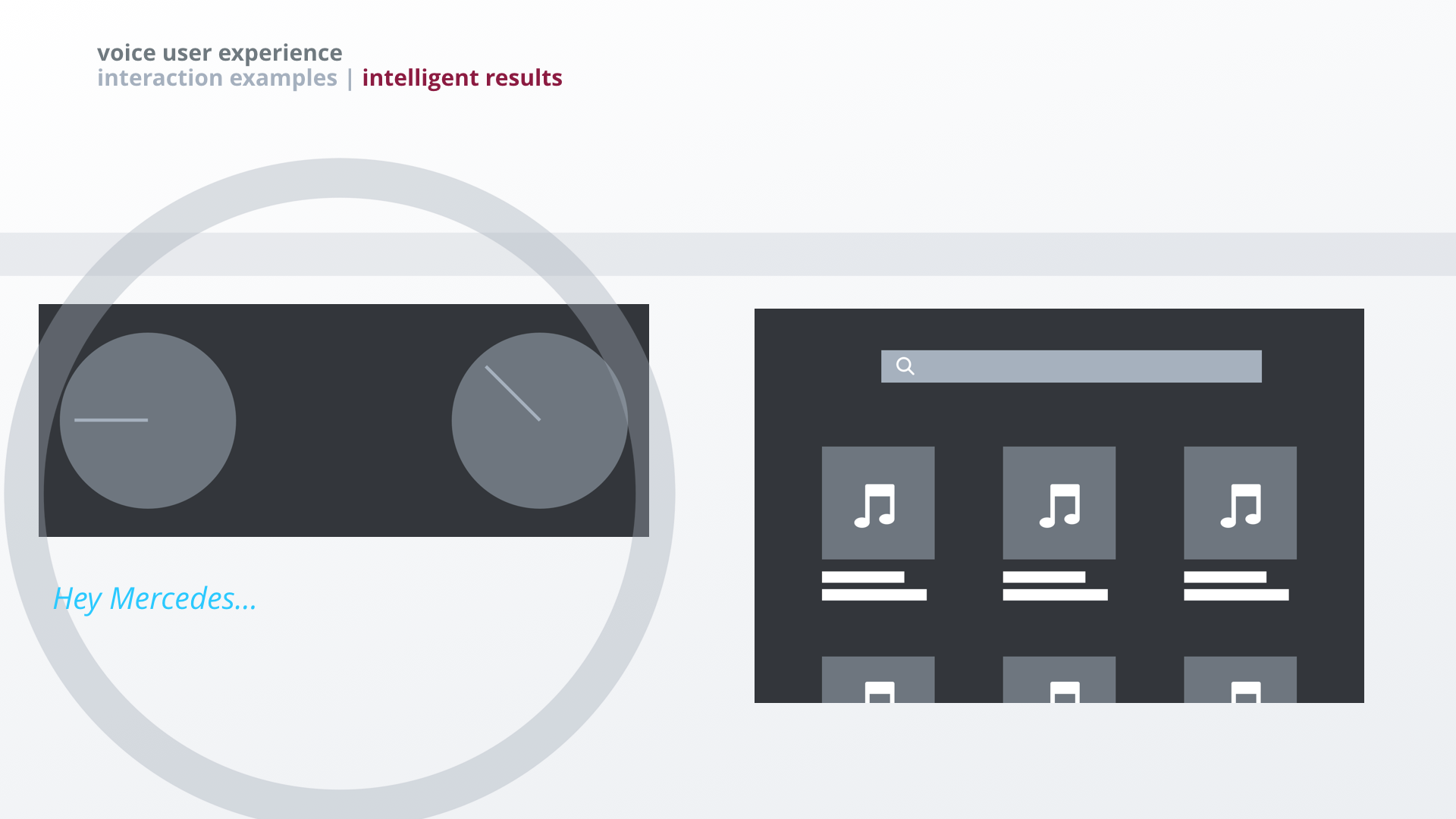
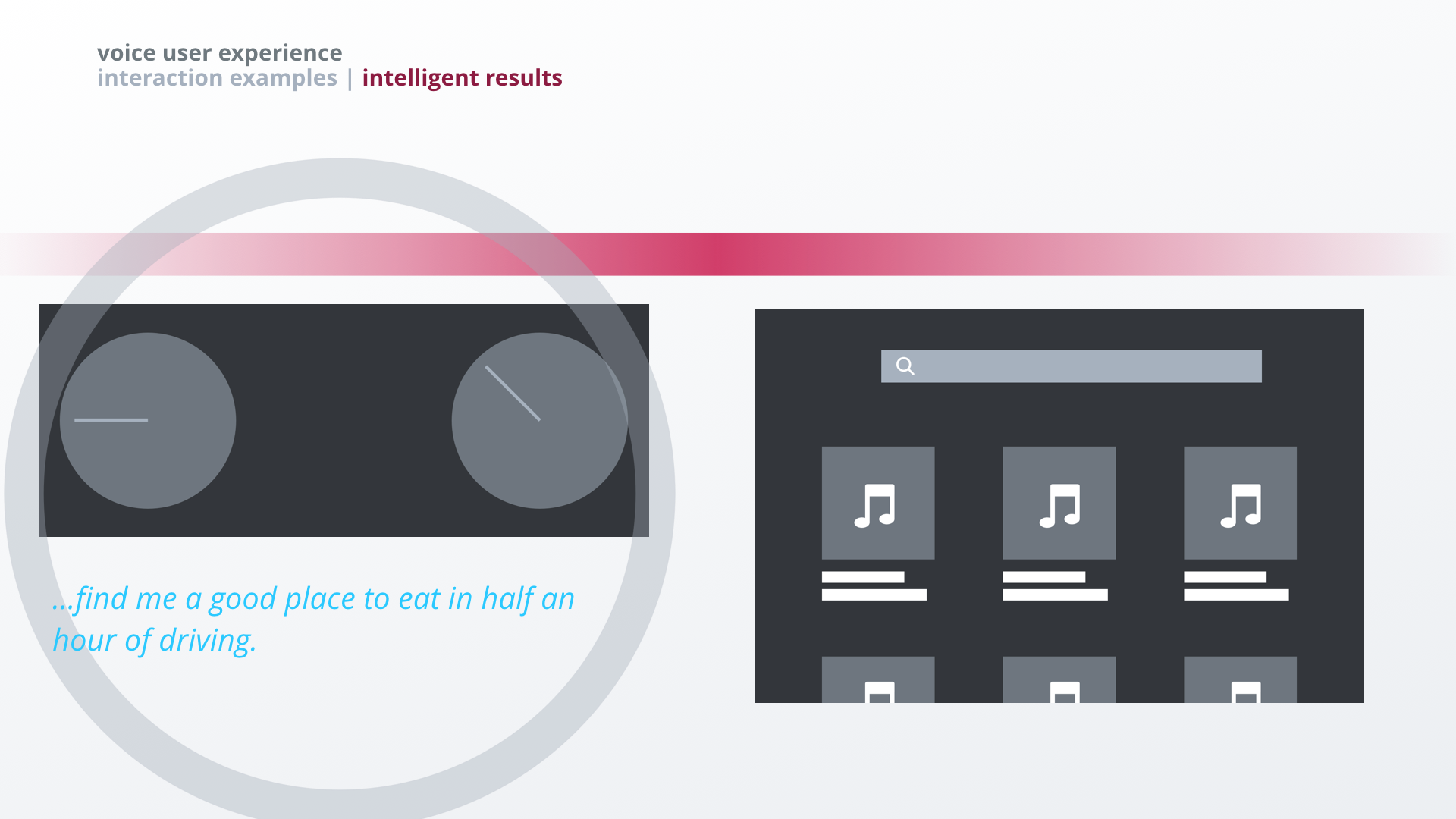
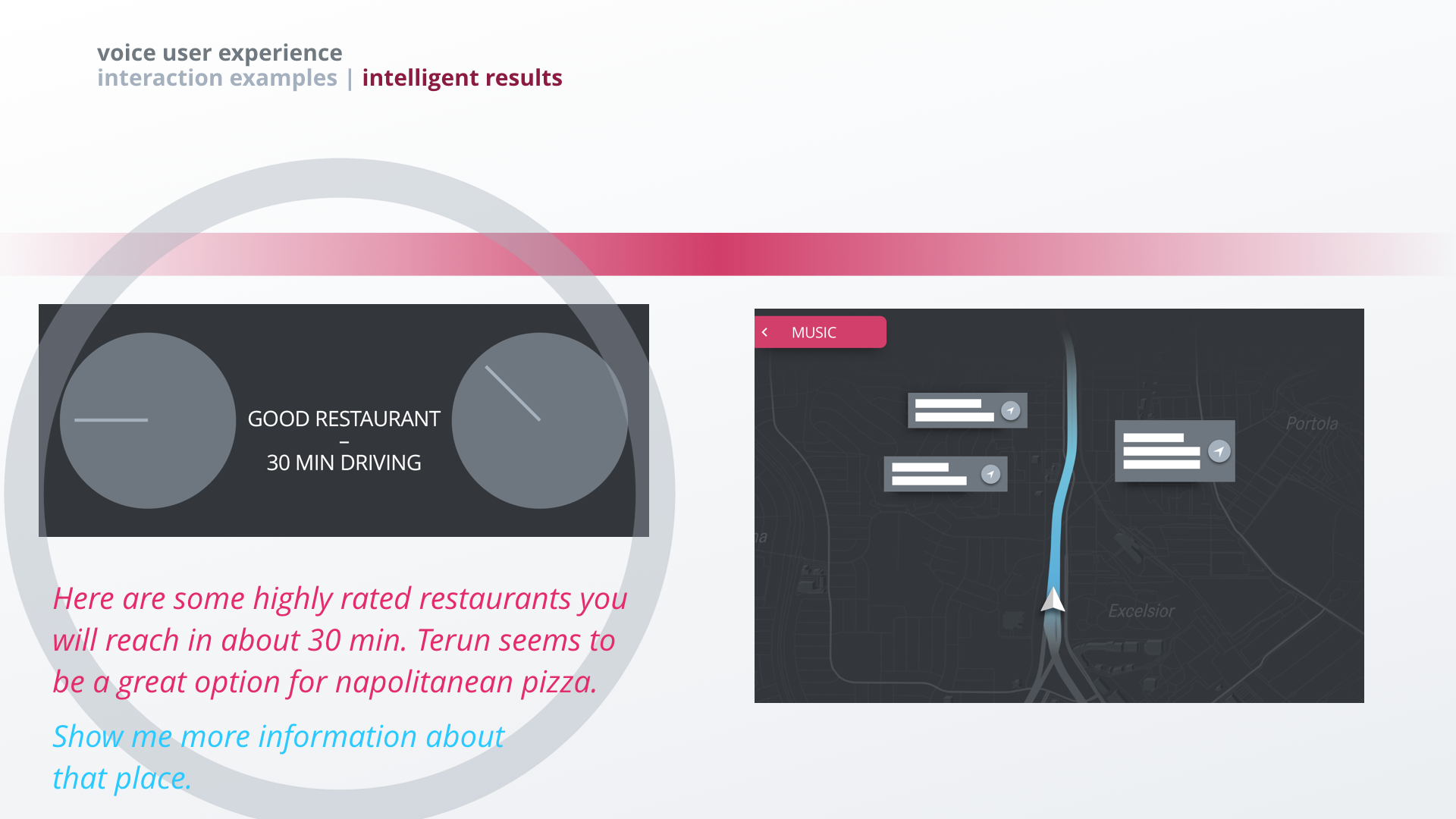
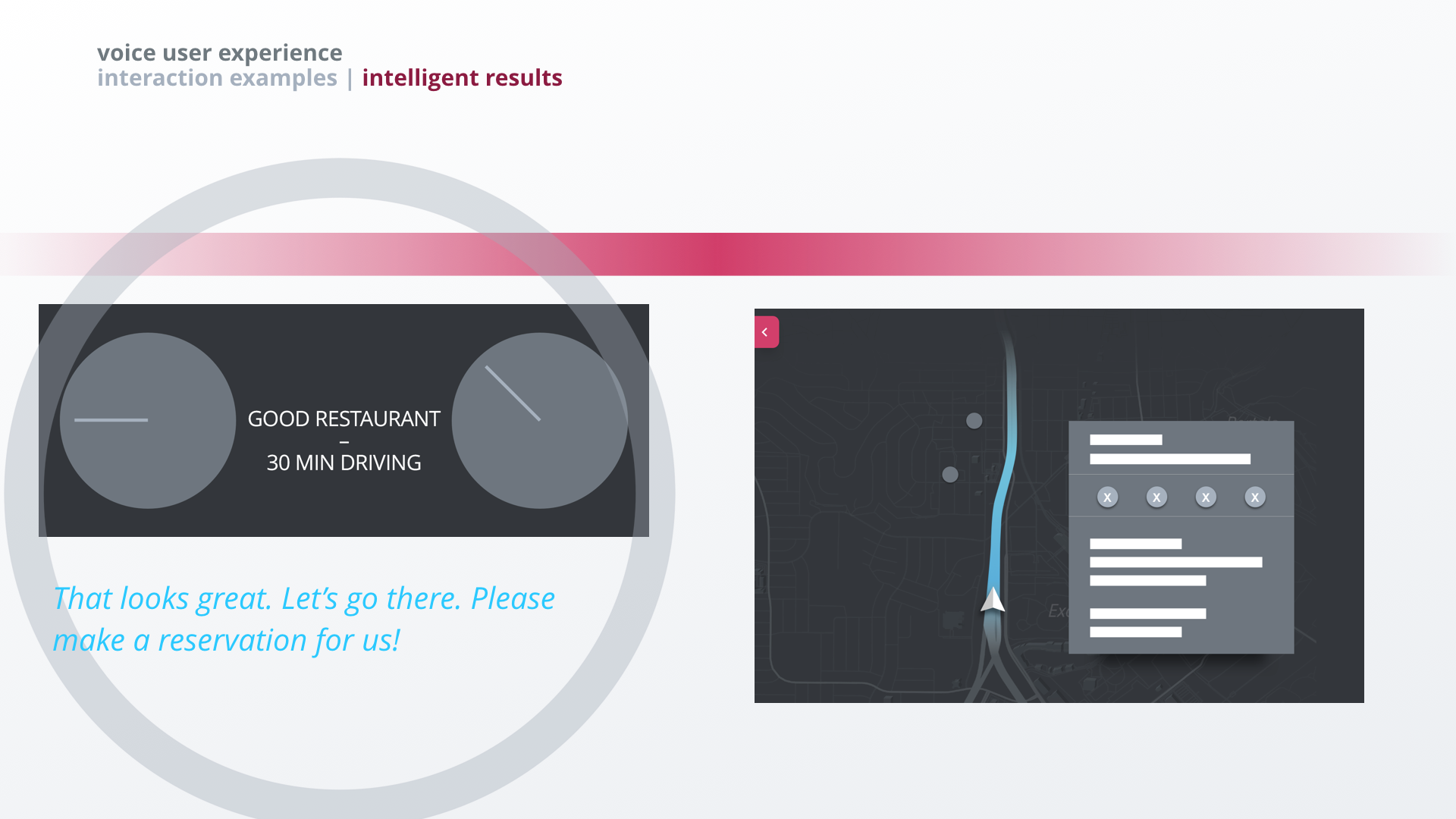
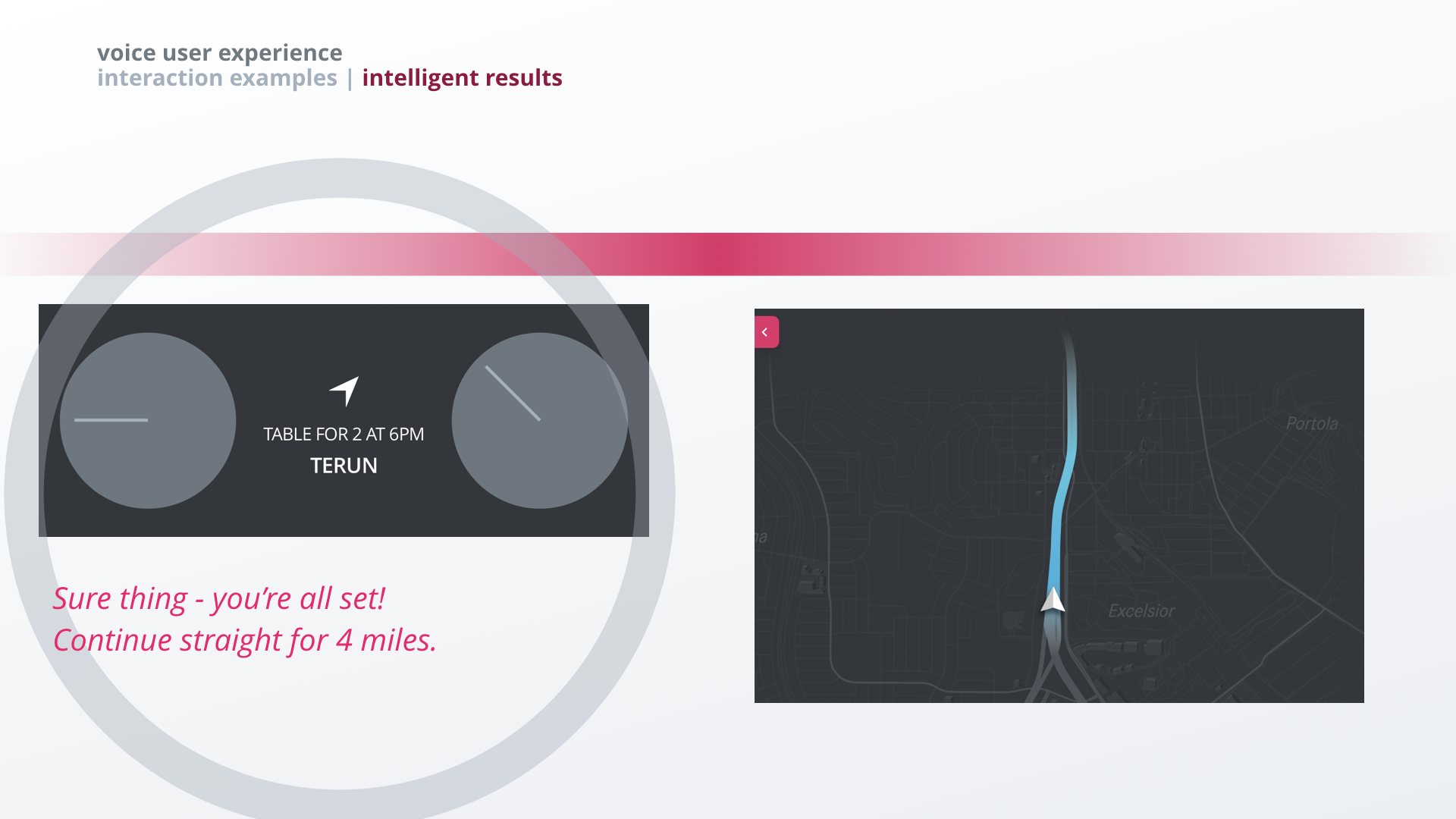
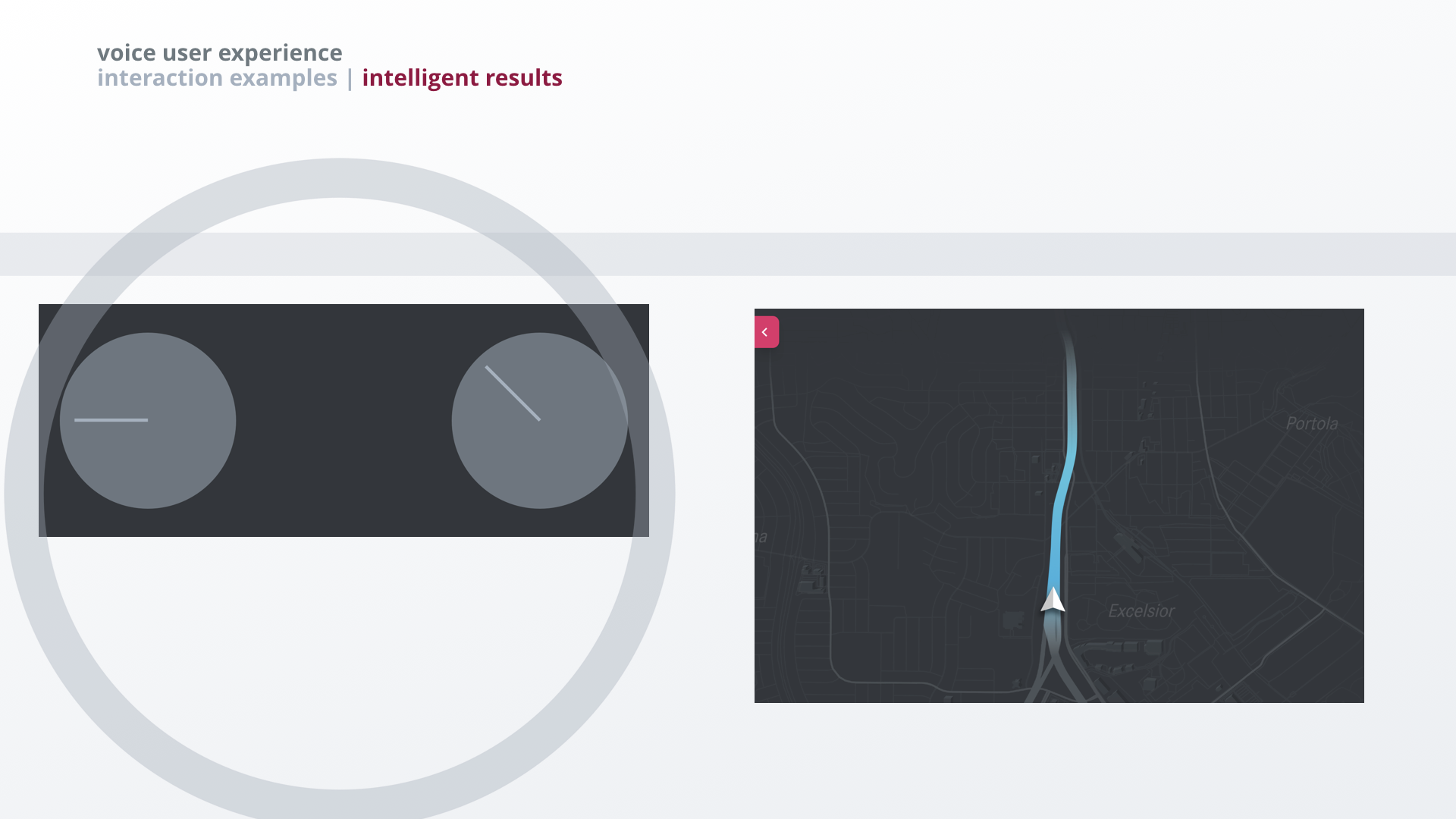
What Was Delivered
The deliverables for this project were
- main guiding UX principles for integrating voice in main system
- detailed voice interaction design principles
- GUI voice interaction design patterns
- base concept documentation looking at general interaction, proactivity, information areas, corrections, voice feedback, natural dialogs, and intelligent results
- prototypes & concept videos
- user research feedback
- visual design principles
These deliverables were handed over to our stakeholders and teams in a handover workshop.












